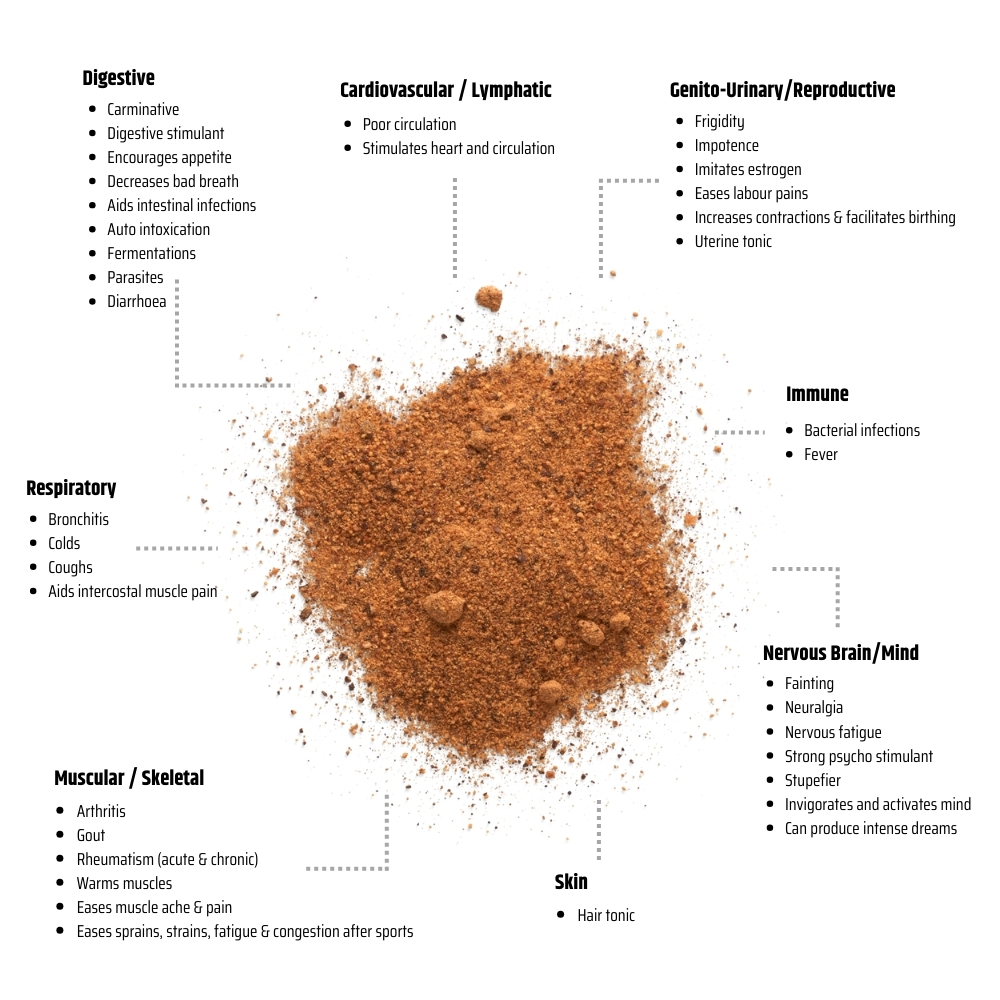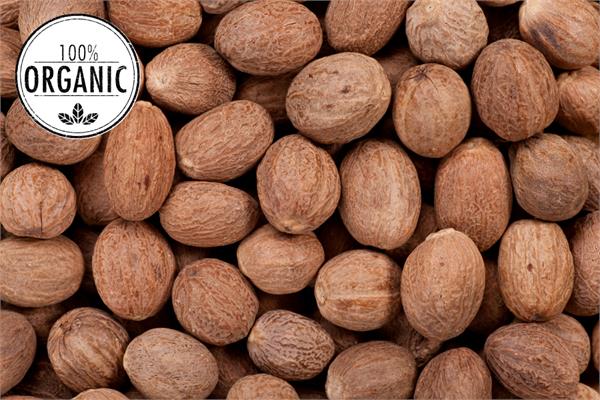
Australian Owned and Operated We have been proudly running for over 30 years

100% Pure & Natural Our products are sourced from the highest quality suppliers and growers from around the world

Not Tested on Animals None of our products are tested on animals

Vegan Friendly Our products are plant based and vegan friendly
Organic Nutmeg
Myristica fragrans
Source: Organic Fruit Kernals
Origin: India
Energetics: Yang
Extraction Method: Steam Distilled
Scent: A spicy and woody aroma.
Blends Well With: Aromatherapy oil blends, Lavender, Geranium, Orange, Clary Sage and Petitgrain.
About
Nutmeg essential oil, extracted from the seeds of the Myristica fragrans tree, is renowned for its warm, spicy aroma and numerous health benefits. With a history dating back to ancient times, nutmeg oil has been highly prized for its culinary and medicinal properties. It is commonly used in aromatherapy to promote relaxation, reduce stress, and uplift mood. Nutmeg oil is also valued for its digestive support, helping to ease indigestion and discomfort. Additionally, it possesses antimicrobial and anti-inflammatory properties, making it beneficial for skin health and wound healing. Whether diffused, applied topically, or used in massage blends, nutmeg essential oil offers a comforting and aromatic experience, making it a popular choice for natural health enthusiasts.
Ayurvedic Uses
In Ayurveda, Nutmeg essential oil, known as "Jaiphal Taila," holds significant therapeutic value. This oil is traditionally used to balance the "Vata" and "Kapha" doshas, aiding in grounding and calming the mind and body. Nutmeg essential oil is prized for its warming and soothing properties, making it beneficial for promoting relaxation, reducing stress, and alleviating muscle tension. Additionally, it is valued for its digestive support, helping to ease indigestion, bloating, and discomfort. Nutmeg oil is also used in skincare for its anti-inflammatory and antimicrobial properties, promoting healthy skin and soothing skin irritations.
Historical Snippets
Originating in the 7th century, nutmeg was highly esteemed in Medieval Europe. Ancient Indian and Chinese royalty valued nutmeg for its hallucinogenic properties, often carrying it in small containers for inclusion in beverages. Its significance soared during the Elizabethan era, believed to offer protection against the Black Plague, rendering it exceptionally costly. By the 18th century, nutmeg held significant value in trade markets, later becoming a common ingredient in English cuisine during the 19th century.
Key Constituents
- Myristicin
- α-Pinene
- Sabinene
- β-Pinene
- Limonene
- α-Terpinene
- Terpinen-4-ol
- Eugenol
- Safrole
- Elemicin
How To Use
Diffuse: Add a few drops to a diffuser to disperse around the room
Topically: Dilute essential oil with any carrier oil at a 2.5% ratio. This equates to 2.5ml essential oil/oils in total mixed with 100ml of chosen carrier oil. 1ml of essential oil is approximately 20-22 drops of oil. Decant into a roller or glass bottle with eye dropper to apply easily or a larger bottle if using for massage. Please note this dilution rate is for adults and children over the age of 6. More information on children and essential oils is on our blog page. Essential Oils should not be used directly on the skin without mixing first with a carrier oil
Inhalation: Add 1-2 drops essential oil to a tissue and inhale at a distance while ensuring that the oil does not come into direct contact with the skin. Alternatively, you can smell the oil directly from the bottle.
Shelf Life
Our freshly decanted Organic Nutmeg essential oil will last for 2-3 years minimum from when you open your amber glass bottle if stored correctly.
Primary Storage Considerations: Keep away from direct light (U.V. radiation). Keep in the amber glass bottle with lid tightly closed. Only open when you need to and decant into a smaller "working" amber glass bottle if possible (and label so you know what is in it). This is to reduce oxidation.
Secondary Storage Considerations: Keep in a refrigerator at around 4 degrees celsius.
Safety
General
Some essential oils may cause photosensitivity to the skin - Use diluted in Jojoba or other complete carrier oil.
Do not ingest essential oils.
Do not apply to eyes, sensitive areas or mucous membranes.
The information on this website is not intended to be used in the diagnosis, treatment or mitigation of any physical or mental illness. Ahimsa Oils offer no advice or recommendations only general information. No therapeutic claims are made within.
Pregnant women, nursing mothers and children should not use essential oils without first consulting an appropriately trained healthcare practitioner.
The statements on this website have not been evaluated by the TGA. David Bosley however worked for a long period in consultation with the TGA to ensure correct labelling with reference to the Ahimsa Oil product range.
Specific
Hazards: Potentially carcinogenic, based on safrole and methyleugenol content; psychotropic in high doses.
Contraindications: None known.
Maximum dermal use: 5%
It's recommended that a dermal maximum of 5% based on 0.5% safrole and 0.2% methyleugenol content.
References
Tisserand, R., & Young, R. (2014). Essential Oil Safety: Second edition



 Available for $100 orders and over
Available for $100 orders and over

